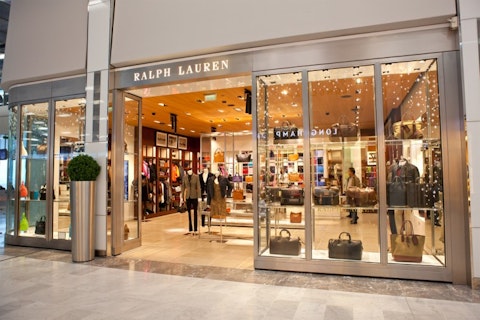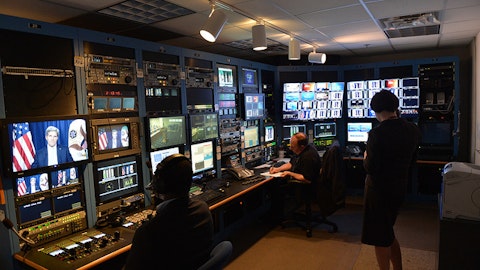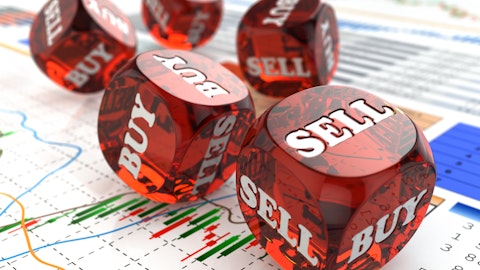2016 is turning out to be an extremely volatile period for apparel stocks. Like stocks from most industries, apparel stocks started 2016 on a dismal note, but most of them managed to recover from those early declines and end the first quarter on a positive note. However, the second quarter of 2016 has seen several apparel stocks being hit hard, with the industry at large underperforming most sectors by a wide margin. The Dow Jones U.S. Apparel Retailers Index, which acts as a barometer for the sector, ended the first quarter with a decent gain of 5%, but is currently trading down by almost 9% year-to-date after seeing a huge decline at the beginning of May. Considering the magnitude of the decline that the sector has seen of late, we thought it would be worthwhile to analyze what hedge funds thought about leading apparel stocks heading into the second quarter. Hence, in this article, we will be discussing the change in hedge fund ownership among five leading apparel stocks during the first quarter.
Through extensive research, we determined that imitating some of the picks of hedge funds and other institutional investors can help generate market-beating returns over the long run. The key is to focus on the small-cap picks of these investors, since they are usually less followed by the broader market and are less price-efficient. Our backtests that covered the period between 1999 and 2012, showed that following the 15 most popular small-caps among hedge funds can help a retail investor beat the market by an average of 95 basis points per month (see more details here).
#5 Guess?, Inc. (NYSE:GES)
– Investors with long positions (as of March 31) : 12
– Aggregate value of Investors’ holdings (as of March 31): $819.67 million
Let’s start with Guess?, Inc. (NYSE:GES), which saw its ownership among the hedge funds in our system inch down by two in the first quarter, while the aggregate value of their holdings in it fell by 15.2%. Shares of Guess?, Inc. (NYSE:GES) are currently trading down by 17% year-to-date, owing largely to the dismal guidance that the company provided for fiscal year 2017 when it released its fourth quarter of fiscal year 2016 results in March. On May 25, Guess?, Inc. reported its first quarter of fiscal 2017 figures, declaring a loss per share of $0.23 on revenue of $448.30 million, missing analysts’ estimates of a loss of $0.19 per share on revenue of $464.84 million. Guess?, Inc. pays a quarterly dividend of $0.225 per share, which translates into an attractive annual dividend yield of 5.68%. Funds that reduced their stake in the company significantly during the first quarter included Joel Greenblatt‘s Gotham Asset Management, which reduced its holding by 85% to 255,865 shares.
#4 Under Armour Inc (NYSE:UA)
– Investors with long positions (as of March 31) : 21
– Aggregate value of Investors’ holdings (as of March 31): $268.13 million
The number of hedge funds in our database long Under Armour Inc (NYSE:UA) declined by four during the first quarter, though the aggregate value of hedge funds’ holdings in the company saw an increase of 18%. Under Armour Inc (NYSE:UA) announced in March that it will issue Class C shares as a stock dividend to shareholders of its Class A and Class B shares. Since adding an additional class of shares has the same affect on a stock as a two-for-one stock split, shares of Under Armour dropped by half when this stock dividend (Class C shares) was distributed to shareholders at the end of the trading day on April 7. Since the day the new class C shares started trading, Under Armour’s stock has dropped by nearly 13% and currently trades down by 6% year-to-date. On May 10, analysts at Bank of America reiterated their ‘Buy’ rating and $54 price target on the stock, which represents potential upside of 42%. D.E. Shaw, founded by billionaire David E. Shaw, sold off its entire stake in the company during the first quarter.
Follow Under Armour Inc. (NYSE:UA)
Follow Under Armour Inc. (NYSE:UA)
Receive real-time insider trading and news alerts
We’ll look into three more popular apparel stocks and how they were traded during the first quarter.
#3 Ralph Lauren Corp (NYSE:RL)
– Investors with long positions (as of March 31) : 30
– Aggregate value of Investors’ holdings (as of March 31): $405.18 million
Ownership of Ralph Lauren Corp (NYSE:RL) among the funds we track inched up by one in the first quarter, while the aggregate value of their holdings in it fell by $62.3 million amid a 13.23% drop in the stock. Shares of Ralph Lauren Corp took a big hit in February after the company reported a 39% year-over-year decline in its fiscal third quarter earnings and lowered its fiscal year 2016 revenue guidance. Though Ralph Lauren reported better than expected numbers for its fiscal fourth quarter of 2016, its stock hasn’t been able to recover much and currently trades down by 16.5% year-to-date. On May 20, analysts at BB&T Corp. initiated coverage on the stock with a ‘Buy’ rating and $115 price target. Ricky Sandler‘s Eminence Capital was one of the hedge funds that initiated a stake in Ralph Lauren Corp (NYSE:RL) during the first quarter, purchasing 607,234 shares of the company.
Follow Ralph Lauren Corp (NYSE:RL)
Follow Ralph Lauren Corp (NYSE:RL)
Receive real-time insider trading and news alerts
#2 Kate Spade & Co (NYSE:KATE)
– Investors with long positions (as of March 31) : 32
– Aggregate value of Investors’ holdings (as of March 31): $694.72 million
Kate Spade & Co (NYSE:KATE) was one of the best performing apparel stocks during the first quarter, registering gains of 43.6%. The number of hedge funds covered by us long Kate Spade & Co (NYSE:KATE) declined by four during that time, while the aggregate value of their holdings in it swelled by 50%. Though shares of Kate Spade have given up a large part of their first quarter gains following the company’s latest quarterly results on May 5, they are still trading up by 27% year-to-date. Some analysts believe that trading at a trailing P/E of 33.37, Kate Spade’s stock is overvalued, especially when one takes into account that the company’s revenue isn’t growing much and the headwinds it faces. On May 5, analysts at Stephens downgraded the stock to ‘Equal Weight’ from ‘Overweight’. Funds that boosted their stake in the company significantly during the first quarter included Daniel S. Och‘s OZ Management, which pumped up its holding up by 689% to 3.86 million shares.
#1 Michael Kors Holdings Ltd (NYSE:KORS)
– Investors with long positions (as of March 31) : 36
– Aggregate value of Investors’ holdings (as of March 31): $1.03 Billion
Led by the impressive quarterly results it reported in early-February, Michael Kors Holdings Ltd (NYSE:KORS) saw a marked increase in its popularity among hedge funds during the first quarter. The number of hedge funds in our system that held a stake in Michael Kors Holdings Ltd (NYSE:KORS) rose by 33.3%, while the aggregate value of their holdings in it jumped by 37% during the period. Shares of the luxury accessories and apparel manufacturer shed 24% of their value in May amid fears that the appeal of the brand is diminishing and that Nordstrom will stop stocking its products going forward due to low demand. Despite this heavy decline, Michael Kors’ stock is still up by 4% year-to-date. The 30 leading analysts and research firms on the Street who track the stock currently have an average rating of ‘Overweight’ and an average price target of $58.19 on it. One of the funds that used the 42% rise in Michael Kors’ stock during the first quarter to book some profits was David Einhorn‘s Greenlight Capital, which reduced its holding in the company by 25% to 6.75 million shares.
Follow Capri Holdings Ltd (NYSE:CPRI)
Follow Capri Holdings Ltd (NYSE:CPRI)
Receive real-time insider trading and news alerts
Disclosure: None






